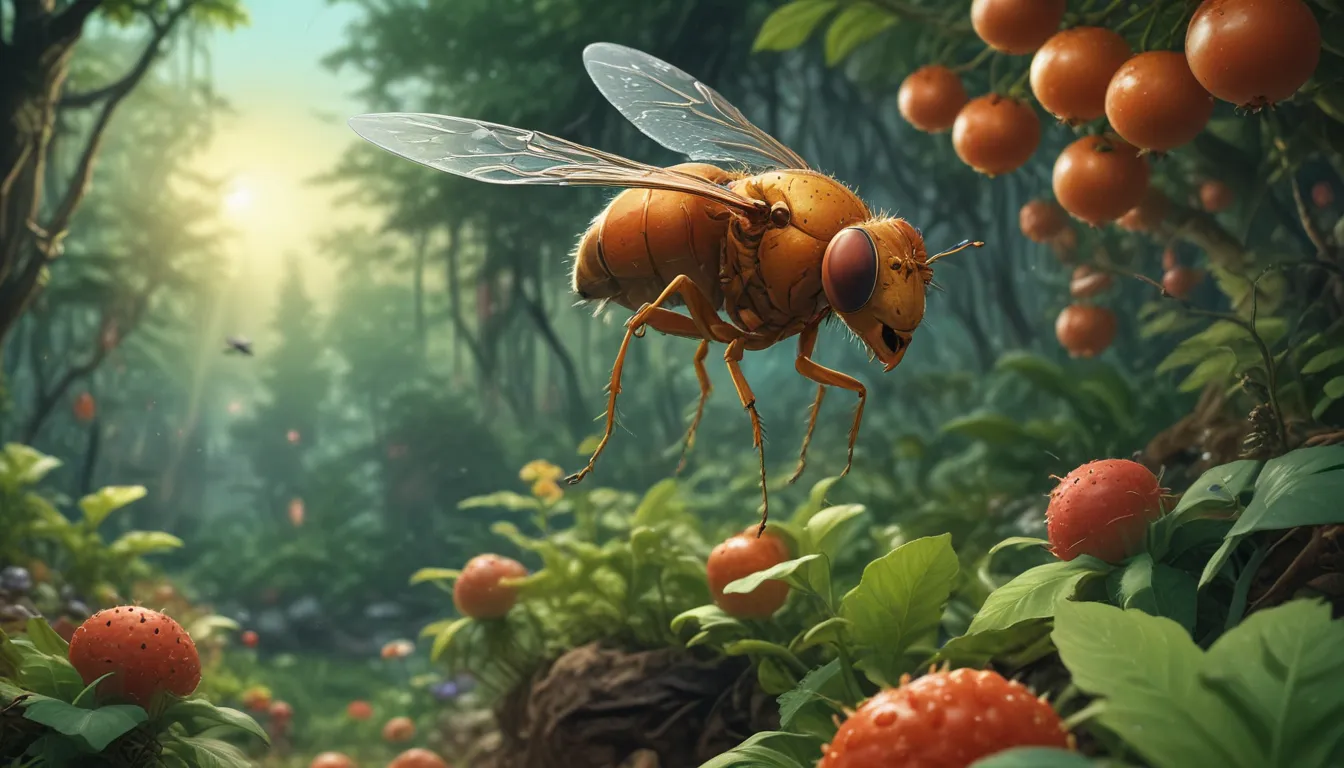How to Combat Fruit Flies in Your Garden and Home

Have you ever been taken aback by a cloud of pesky flies emerging from a forgotten banana peel or unwashed kitchen cloth? Or perhaps you’ve eagerly awaited a delicious raspberry harvest, only to find them damaged and sour on the vines? Fruit flies can be a nuisance both indoors and in the garden, but fear not – there are various methods to combat these tiny insects.
If you’ve ever dealt with a fruit fly problem, you know how frustrating it can be. But worry not, as I’m here to guide you through the process of controlling these little pests, whether they’re buzzing around your home or wreaking havoc in your garden.
Let’s delve into everything you need to know about these tiny yet troublesome creatures. From identification to biological control methods, I’ve got you covered.
What You’ll Learn
- What Are Fruit Flies?
- Identification
- Biology and Life Cycle
- Monitoring
- Organic Control Methods
- Cultural and Physical Control
- Biological Control
- Organic Pesticides
- Chemical Pesticide Control
What Are Fruit Flies?
Today, we’ll focus on two main types of fruit flies: the common fruit fly (Drosophila melanogaster), known as a vinegar fly, and the spotted wing drosophila (D. suzukii), a prevalent invasive pest in farms and gardens.
While there are many other types of fruit flies that target various fruits like citrus, gooseberries, and cherries, we’ll concentrate on these two common species for now.
Fruit flies in the home are a year-round annoyance, attracted to ripe produce and rotting garbage, with infestations peaking in late summer and fall. On the other hand, spotted wing drosophila (SWD) target healthy fruits like berries, accelerating rotting and making them unpalatable.
Both species are fond of unrefrigerated, ripe, or ripening perishable items, whether in your kitchen or garden.
Identification
Adult D. melanogaster are small, tan flies measuring an eighth of an inch long with red eyes, distinguishable by black stripes on males and abdomen tips on females. In contrast, adult SWD are yellow-brown flies with red eyes and dark bands on their abdomens.
Pupae of both species are light to dark brown and tapered, while larvae are white, cylindrical maggots measuring an eighth of an inch long. The eggs are tiny, white to light yellow, and resemble rice grains.
Biology and Life Cycle
Fruit fly populations can multiply rapidly, with females laying up to 500 eggs each. D. melanogaster breed year-round indoors, while SWD populations peak in late summer.
Both species undergo multiple generations per year, with eggs hatching within 30 hours and larvae feeding for about four days before pupating. The entire life cycle can be completed in less than a month.
Monitoring
Detecting fruit fly infestations is crucial for effective control. You can monitor for SWD by setting up homemade traps with apple cider vinegar to attract and capture the flies. Alternatively, using SWD-specific traps like scentsy traps can help monitor and control adult populations.
Organic Control Methods
Controlling fruit fly infestations organically involves cultural, physical, and biological strategies. Maintaining cleanliness in your kitchen and garden, harvesting ripe produce promptly, and implementing exclusion techniques like insect netting are effective cultural and physical control measures.
Cultural and Physical Control
- Maintain a clean kitchen and promptly dispose of overripe produce.
- Harvest ripe fruits frequently and avoid leaving damaged fruits around to attract flies.
- Clean up garden areas to prevent overwintering of fruit fly populations.
- Use insect netting to protect plants from infestation.
Biological Control
While augmentative biological control methods are still under development, conserving beneficial insects like ants, spiders, and parasitoids can help control fruit fly populations. Introducing beneficials like rove beetles and beneficial nematodes can aid in controlling larvae and pupae.
Organic Pesticides
Organic pesticides like spinosad products are effective against fruit flies. Products like kaolin clay, potassium silicate, and Surround WP can provide additional control. Ensure to apply pesticides safely to protect beneficial insects and pollinators.
Chemical Pesticide Control
While chemical pesticides are an option for severe infestations, it’s essential to use them responsibly and avoid harming beneficial insects and pollinators. Products like cyantraniliprole, malathion, and cypermethrin can effectively control fruit fly populations.
Battling Fruitarian Insects
Dealing with fruit flies can be a challenge, but with the right strategies, you can effectively control these pesky pests. Remember to maintain cleanliness in your kitchen, monitor for infestations, and implement cultural, physical, and biological control methods to keep fruit fly populations in check.
Have you encountered fruit flies in your home? Share your experiences and strategies for combating them in the comments below. And if you’ve dealt with spotted wing drosophila damage, feel free to share your stories and photos!





